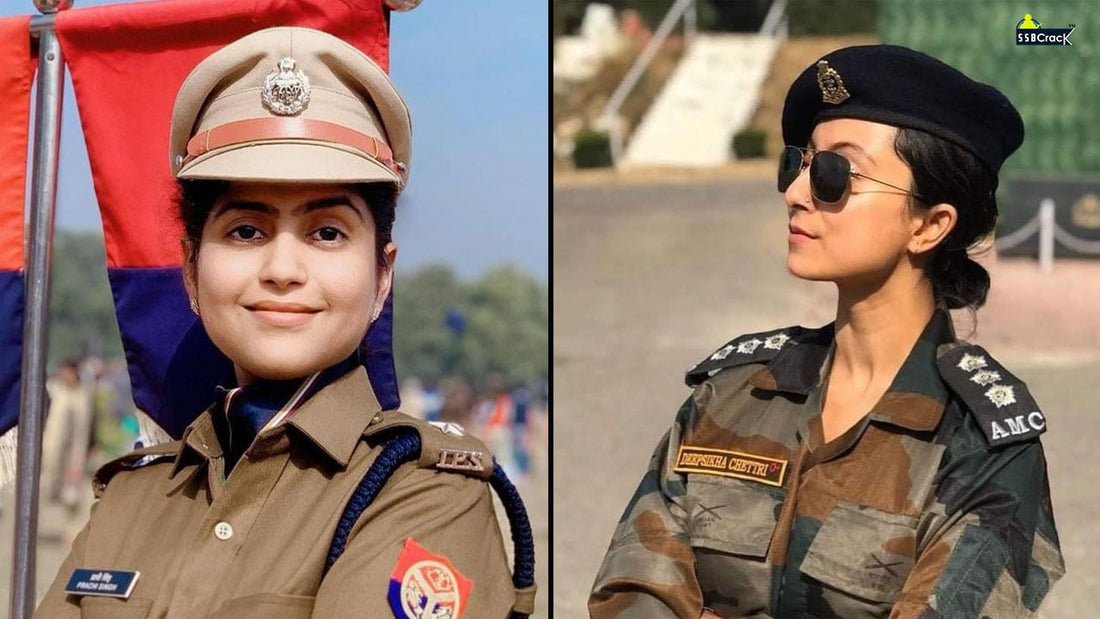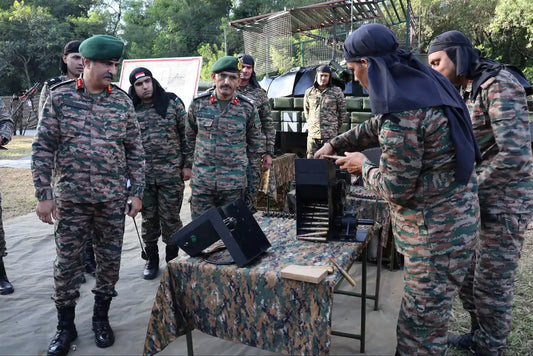Salary Comparison: IPS vs Army Officer - Who Earns More?

In the field of civil service, choosing between a career as an Indian Police Service (IPS) officer or an Indian Army officer is more than a simple job decision; it's a dedication to serving the nation. Both roles are synonymous with honor, leadership, and responsibility, essential for maintaining order and security across India's diverse landscape. A significant factor for those deciding between these professions is the potential for financial compensation. The question that often arises is: which profession offers a higher salary?
This article provides an in-depth analysis of the salary structures and benefits associated with IPS officers and Army officers. It explores the specifics of pay scales, allowances, and additional benefits to reveal which profession offers greater financial rewards.
Historical Context
The evolution of IPS and Army officer roles since India's independence in 1947 has been significant. The IPS was created to uphold law and order, while the Army has always been the country's defense backbone. Both careers have historically been prestigious, each offering unique contributions to India's development. Over the years, changes in government policies, societal dynamics, and economic factors have impacted their respective pay structures, making an understanding of their current status essential.
Salary Structure Overview
Examining the salary structures of IPS officers and Army officers is crucial for comparing their earnings. It's important to recognize that both services adhere to the 7th Pay Commission guidelines, which standardize government sector pay scales.
1. Salary Comparison Highlights
The following breakdown highlights the monthly basic pay across various rank levels:
| Rank/Level | IPS Officer (Basic Pay per Month) | Army Officer (Basic Pay per Month) |
|---|---|---|
| Entry Level | ₹56,100 (Dy. SP / ASP) | ₹56,100 (Lieutenant) + ₹15,500 MSP + allowances |
| Mid-Level | ₹78,800 - ₹1,31,100 (SP to DIG) | ₹69,400 - ₹1,21,200 (Major to Lt. Colonel) + MSP + allowances |
| Senior Level | ₹1,44,200 - ₹2,25,000 (IG to DGP) | ₹1,44,200 - ₹2,50,000 (Major General to General) + MSP + allowances |
2. Entry-Level Comparisons
At the entry-level, both IPS and Army officers start with the same basic pay of ₹56,100. However, Army officers receive an additional Military Service Pay (MSP) of ₹15,500, reflecting the inherent risks of military service. This extra pay significantly influences the Army officers' in-hand salary, resulting in higher monthly earnings.
3. Mid-Level Insights
At mid-level ranks, the difference becomes more evident. An IPS officer, from Superintendent of Police (SP) to Deputy Inspector General (DIG), earns between ₹78,800 and ₹1,31,100 in basic pay. Comparatively, Army officers, in ranks like Major and Lieutenant Colonel, have basic pays between ₹69,400 and ₹1,21,200. Though their basic pay might be slightly lower, the addition of MSP and various allowances makes their total monthly earnings considerably higher.
Allowances and Additional Perks
Allowances play a crucial role in the overall salary comparison of these professions. Here’s a look at the specific allowances:
1. IPS Officers
IPS officers receive standard government allowances, which include:
- Dearness Allowance (DA): Approximately 28% of basic pay, intended to offset inflation.
- House Rent Allowance (HRA): Varies based on location, assisting with housing costs.
- Travel Allowances: Covers expenses related to official travel.
While beneficial, IPS officers generally lack risk pay, which significantly affects their total compensation compared to their Army counterparts.
2. Army Officers
Besides basic pay and MSP, Army officers benefit from a broader range of allowances:
- Risk Allowances: For duties in hazardous conditions.
- Field Allowances: Offered for deployments in challenging terrains.
- Uniform Maintenance Allowance: Covers uniform upkeep costs, essential for military standards.
These perks result in a much higher in-hand salary. The combination of MSP and various allowances often enables Army officers to out-earn IPS officers at comparable ranks.
Statistical Data and Research Insights
Recent data from government reports and independent studies suggest that the average total compensation for Army officers typically surpasses that of IPS officers, particularly as they advance in rank.
- In-Hand Salary: On average, Army officers' in-hand salaries can be up to 30% higher than those of their IPS counterparts due to additional financial benefits exclusive to military personnel.
- Retention and Career Growth: These financial incentives help attract and retain talent in the Army, supporting a robust leadership structure crucial to national defense.
Comparative Analysis
While financial compensation is a critical consideration when choosing between an IPS or Army officer career, it's not the only factor. Although Army officers generally have higher earnings at equivalent ranks, other elements such as job satisfaction, societal impact, and career longevity also play important roles.
- Job Satisfaction: Many individuals drawn to the IPS are motivated by the opportunity to have a direct impact on community safety and law enforcement, which can outweigh financial factors.
- Career Longevity and Pensions: Both IPS and Army careers offer pension benefits and post-retirement advantages, providing security beyond active duty, making them appealing career options.
Challenges and Solutions
Both career paths encounter unique challenges that can affect long-term job satisfaction and financial stability.
- Work-Life Balance: Army officers may face long deployments away from home, potentially leading to stress and burnout. IPS officers might experience significant stress due to the demands of law enforcement.
- Health Risks: Army officers often operate in regions presenting health risks from environmental factors, while IPS officers may face threats related to crime and community disturbances.
Potential Solutions:
- Enhancing support systems, including mental health services, within both sectors could be beneficial.
- Emphasizing family welfare programs can help address work-life challenges.
Future Trends and Predictions
As India's economic and social landscape continues to evolve, changes in the demands and structures of both the IPS and Army are anticipated. Potential future developments include:
- Increased Salaries: Due to the critical nature of these professions, further pay scale revisions may occur to keep pace with inflation and lifestyle changes.
- Advanced Training and Technology: Future trends might focus on technology adoption and advanced training for improved job performance, potentially influencing compensation structures.
Conclusion
The salary comparison between IPS and Army officers indicates a clear trend: Army officers generally earn more due to additional allowances and risk compensations linked to military service. While basic pay may start similarly, the total effective salary for Army officers, bolstered by allowances like MSP, places them in a favorable financial position.
However, aspiring officers should consider factors beyond monetary compensation. Both career paths offer substantial opportunities to impact society and achieve personal fulfillment, guiding individuals in making informed career choices. Ultimately, whether one chooses to be an IPS officer focused on law and order or an Army officer committed to national defense, the dedication to service is the shared value uniting these roles.



















